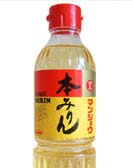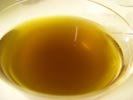 1 large salad or 4 small 1 large salad or 4 small |
||
|
Hiyashi chuka is a cold noodle salad dish served only in the summer. Traditionally it would be topped with chopped meats as well as the chopped omelette. It can be served as a centrepiece for everybody to dive into
or separately in bowls. There is a lot of preparation involved but as it is served cold
everything can be prepared in advance.
|
||
|
125g (2 small packs) egg noodles For the mushrooms (optional) 8 mushrooms (button or shitake) 2 tbsp sesame oil 1 tbsp vegetable oil 2 tbsp rice vinegar 1 tbsp soy sauce 1 teaspoons sugar 50g (2oz) French beans 50g (2oz) asparagus tips 1 pak choi 1 small cucumber For the omelette little vegetable oil 2 eggs Dash of soy sauce Dash mirin ½ teaspoon sugar For the sauce 3 tbsp soy sauce 2 tbsp sugar 3 tbsp rice vinegar 5 tbsp water or dashi 1 teaspoon sesame oil 2 teaspoons wasabe |
Cook your noodles in plenty of boiling water for 2 to 3 minutes (check the packet instructions) and then cool under running cold water. Drain and mix in a little sesame oil to stop them from sticking together. |  |
| In a pan of salted boiling water cook the pak choi, french beans and asparagus for 3 minutes. Again cool the vegetables under cold running water and drain them. |  |
|
|
Place the oil in a small frying pan and fry the mushrooms over a medium to low heat until
they are lightly browned. Add the remaining ingredients and simmer the mushrooms in the sauce until most of the liquid has evaporated away. Allow them to cool. |
 |
|
|
Mix the eggs, soy, mirin and sugar together in a bowl and lightly beat the ingredients together.
Heat a little oil in a frying pan and pour the omelette mixture in. Cook it both sides until
both sides are lightly browned and the eggs cooked through. Turn the omelette out onto a work surface and allow it to cool. When cool cut it into thin strips by rolling it up and cutting across the width of the omelette. |
 |
|
|
To make the sauce mix all of the ingredients together in a small saucepan and warm them together.
When the sugar has dissolved take the sauce off the heat and allow it to cool. To assemble the salad start with the noodles. Pile on some finely chopped cucumber and then the poached green vegetables. Top with the chopped omelette and finally pour over the sauce. Finish with some chopped spring (green) onions and toasted sesame seeds and arrange the mushrooms around the outside. |
 |
|







